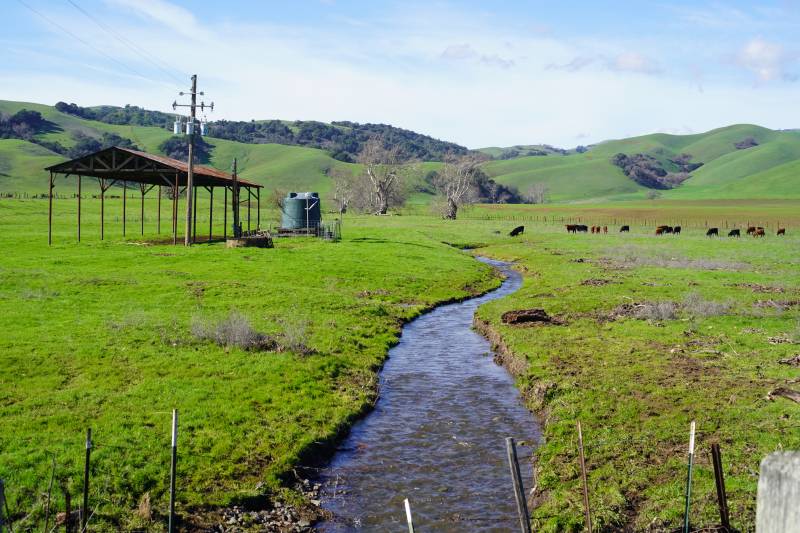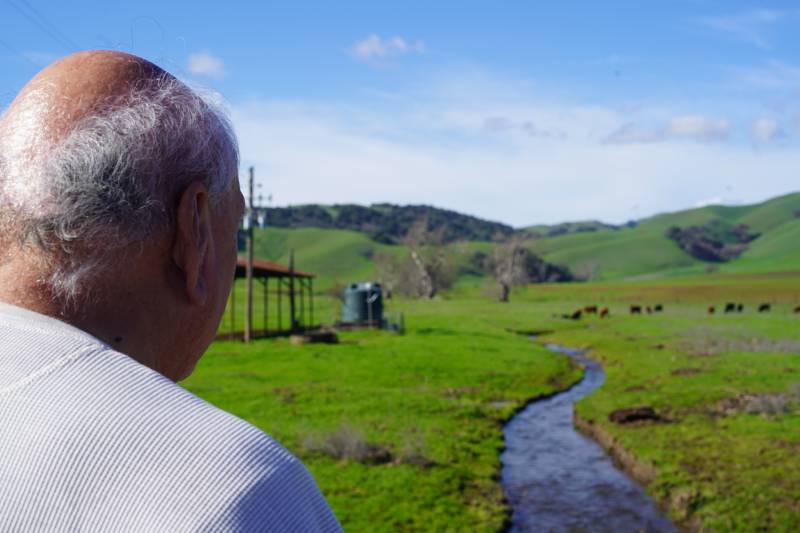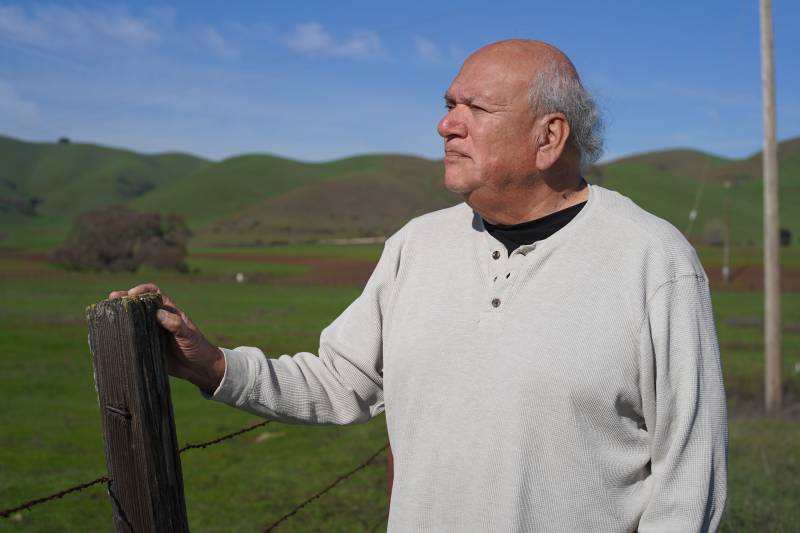At the southern edge of the South Bay in Santa Clara County, where the foothills of the Santa Cruz Mountains meet the town of Gilroy, there is a grassy pasture. Here, a small stream runs through acres of land while cattle graze and birds fly above.
This piece of land is a proposed mining site—but it’s also traditional ceremonial ground for the Amah Mutsun Tribal Band.
For over 200 years, the Amah Mutsun have been unable to access one of their most sacred sites, known as Juristac.
“Juristac translates to the place of the Big Head. Our most important ceremonies were Big Head ceremonies. And so this location is where our ancestors, for thousands and thousands of years, held Big Head dances and ceremony,” says Valentin Lopez, chairman of the Amah Mutsun Tribal Band.
For the last seven years the tribal band has organized support from the local community, religious leaders, conservation groups and nearby city councils to stand in support against the development of the Sargent Quarry project, a proposal to use the land for mining purposes.

The Santa Clara Board of Supervisors is currently reviewing the proposed mining project’s environmental impact report.
This week we hear from Valentin Lopez , the tribal chairman of the Amah Mutsun, speak about the historical and spiritual significance of Juristac, and the movement to protect the land for the Amah Mutsun.
Below are lightly edited excerpts of our conversation with Valentin Lopez.
Marisol: The proposed plans for this mining project include making three open-pit quarries that would extend 250 feet deep in order to remove sand and gravel from this site, for the next 30 years. On a personal level, what did it feel like when you first heard about this private firm wanting to develop a mine?
Valentin: When we see this mining permit come in, we say that this is just the continuation of that brutality, that erasure, that destruction of the Amah Mutsun. When you look at our history in those periods of colonization, there were actually three periods of very brutal, brutal colonization in which the populations of our tribe was reduced by 96% to 98%.
The Spanish mission period, the Mexican period, and then the American California period. You know, all three of those periods wanted to destroy our spirituality. They wanted to destroy our culture. They wanted to destroy our Indigenous knowledge. They wanted to destroy our environments. For example, just to the east of here, there were four natural lakes. We had seven villages at those four lakes and we had large populations at those lakes. But, they drained those lakes for agriculture.
Marisol: What is like the ideal scenario to happen here? How do you want this land to be used?
Valentin: Well, the most important thing is to stop the mining permit from being approved. And then after that, finding a way for the conservation organizations to somehow come into possession of the lands so that we can ensure that it’s never again threatened by any development.
But then beyond that, we would like our tribe to have rights to return to these lands for ceremony, for managing and stewarding the land so that we can bring back our food plants and our medicine plants. But also education of the public to let them know about the true history of Amah Mutsun and the true history of Native American tribes in California.
Marisol: How do you keep motivated to fight this long fight?
Valentin: I see the way that the one, two or three generations before me and what they had to deal with and the conditions they had to live in. And I see the impact of the historic trauma that resulted from that history has impacted our members.
For us to accept the laws of the county that allow them to destroy our most sacred site with the mining permit, we can’t accept that. To allow them to have laws that they continue to keep us landless, to keep us in poverty, we can’t accept that.


Rightnowish is an arts and culture podcast produced at KQED. Listen to it wherever you get your podcasts or click the play button at the top of this page and subscribe to the show on NPR One, Spotify, Apple Podcasts, TuneIn, Stitcher or wherever you get your podcasts.


